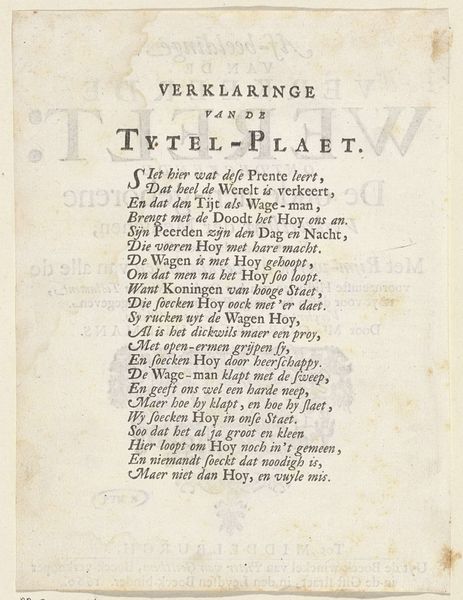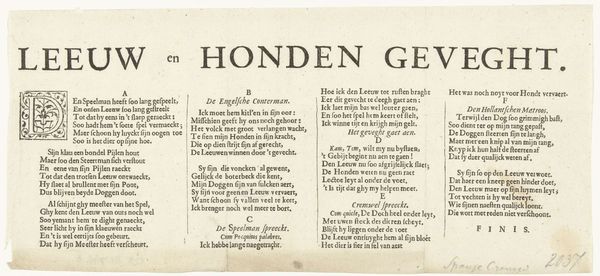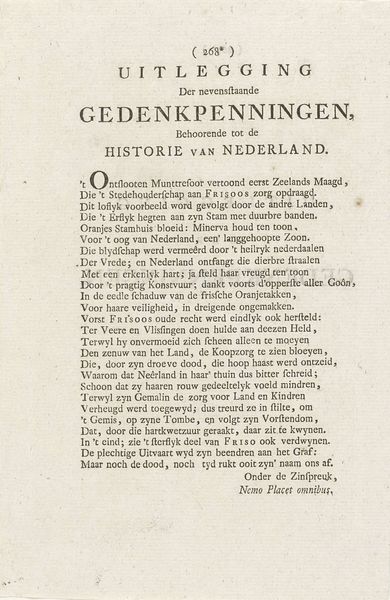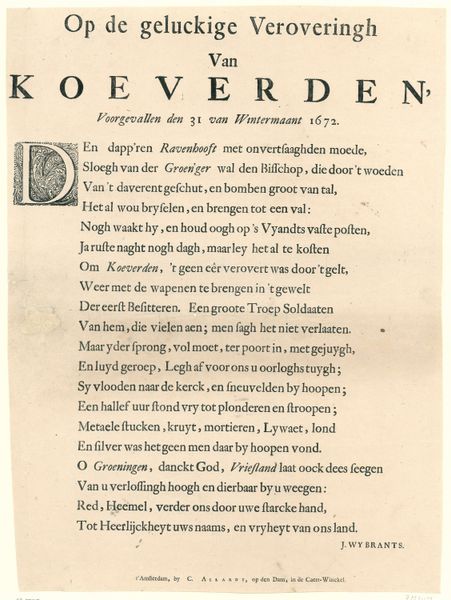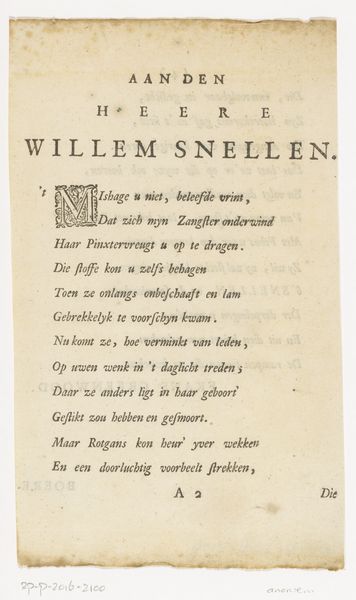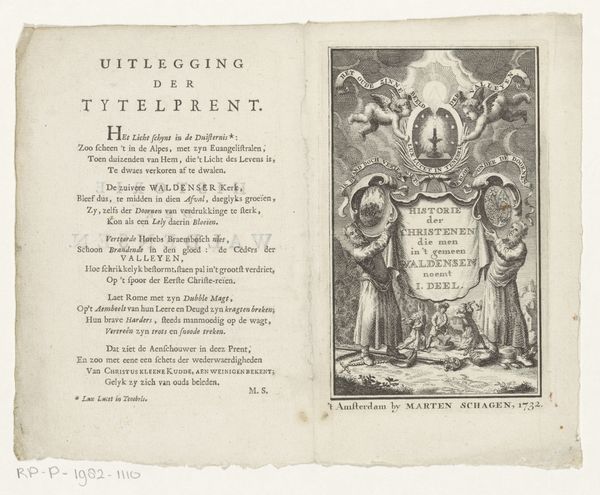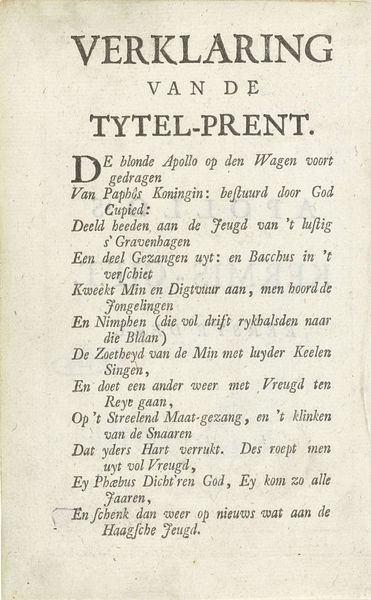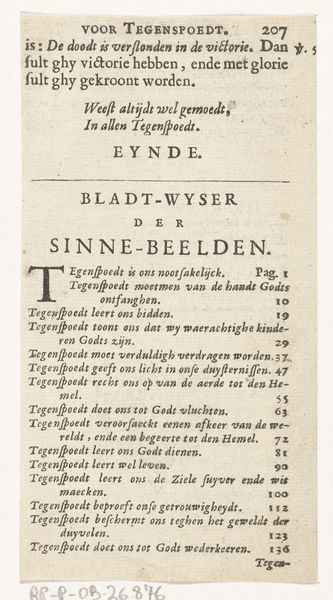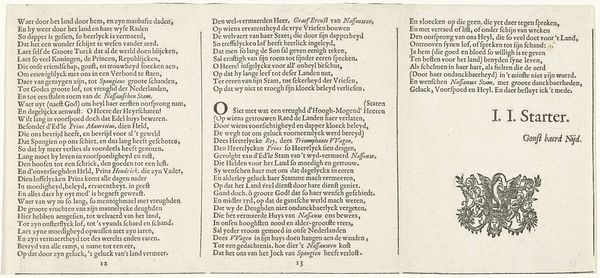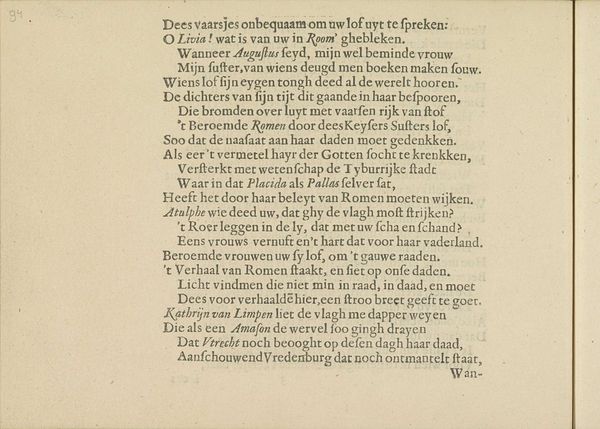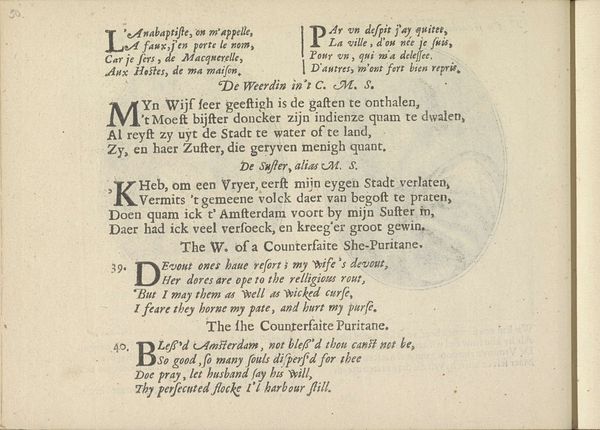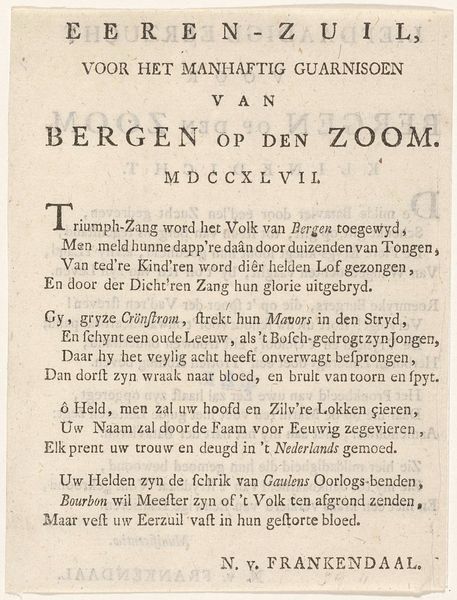
Verklaring van de prent op het titelblad van: Beknopte historie der beroertens te Amsterdam, 1748 1748
0:00
0:00
graphic-art, print, textile
#
graphic-art
#
script typography
#
baroque
# print
#
old engraving style
#
hand drawn type
#
textile
#
hand-drawn typeface
#
fading type
#
stylized text
#
thick font
#
handwritten font
#
historical font
#
columned text
Dimensions: height 140 mm, width 85 mm
Copyright: Rijks Museum: Open Domain
This is the explanation of the print on the title page of "Concise History of Disturbances in Amsterdam," from 1748, by Willem Brinkink. Here, allegorical figures such as 'Plunderlust' play out a scene of turmoil, while Amsterdam, personified as a maiden, laments. Justice comforts her, backed by the citizenry, ready to defend their city. Note how 'Pacht,' or 'The Lease,' is depicted with a sharp pair of scissors, an emblem of its hated power to cut away at the common good. The scissors, as a symbol of fate or cutting away what is deemed unnecessary, recurs across cultures. Remember the Greek Moirae who snipped the thread of life, or Atropos with her shears, determining mortality. This symbol has evolved to signify not only death but also painful, but necessary divisions. The text's emotional power lies in the citizens' resolve and the city's salvation. The imagery engages us on a deep, subconscious level, evoking feelings of solidarity and defiance against oppression. This cyclical motif of uprising and liberation is a testament to its enduring appeal throughout history, offering hope that through collective action, freedom can be attained.
Comments
No comments
Be the first to comment and join the conversation on the ultimate creative platform.

